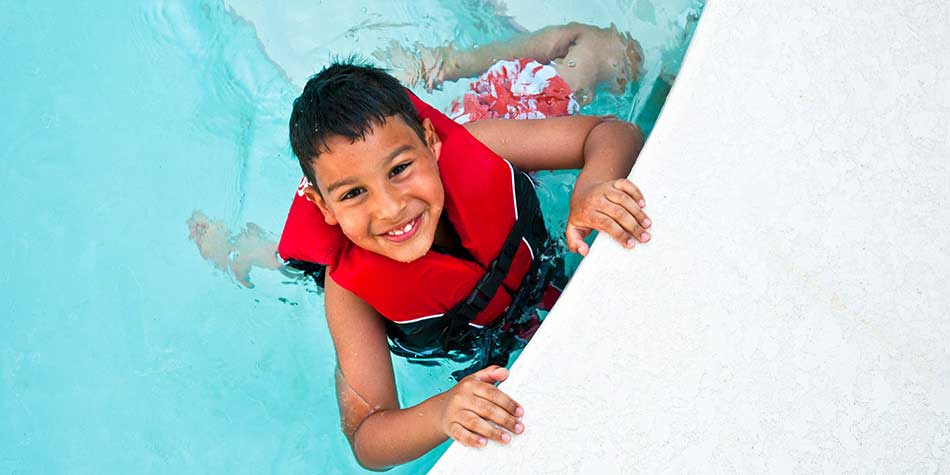
Life-saving Water Safety Rules Every Parent Should Know
Make no mistake: Drowning is a threat to children everywhere. It's the #1 cause of accidental death for kids ages 1-4.
Drowning takes as little as 25 seconds, and can happen in just a few inches of water. When you see a swimming pool, you should proceed with caution. But that concern should extend to a baby pool, tub, toilet, even a bucket.
Rule #1: Never Take Your Eyes Off Your Child When in or Around the Water.
Touch supervision: Young and inexperienced swimmers should have a responsible adult within touching distance at all times.
Sight supervision: More experienced swimmers should always be within your sight, no matter their age.
Kids of all ages can get stuck underwater, grow tired, or become panicked. Don't assume you'll hear yelling or splashing if help is needed--that's something you see in the movies. IN REAL LIFE, MOST KIDS AND ADULTS DROWN QUIETLY AND QUICKLY.
Rule #2: Ignore Your Phone.
Make a pact with yourself: When in or near water, silence your phone and stow it out of reach so you're not tempted to use it. A child can be submerged within five seconds.
However, do bring your phone to the pool for emergencies. Call 911 immediately if your child goes under.
Rule #3: Floaties, Inflatable Toys, Rafts, Pool Noodles Are Not Life Jackets.
Floaties, noodles, rafts, and pool toys are fun water activities… _they are NOT life jackets_. Use touch supervision with your little one, even if they are wearing floaties or water wings. The only safe flotation device is a well-fitting Coast Guard-approved life jacket. It's a good idea to require your weak swimmers to wear one while in or around the water, but it still doesn't replace touch or sight supervision.
Remove all water toys from the pool when not in use; otherwise, they may entice a toddler into the water.
Rule #4: Enroll Your Child in Swimming Lessons.
The American Academy of Pediatrics (AAP) recommends that all children ages 4 and older take swimming lessons. But lessons shouldn't give you a false sense of security: all toddlers and preschoolers need a caregiver at their side in the pool.
Rule #5: Insist on the Buddy System for Older Kids.
Pair your child with a friend or a sibling, and explain that each kid is responsible for knowing where the buddy is at all times. This still does not replace adult supervision; rather it's a second set of eyes on kids.
A crowded pool does not mean there are more eyes on kids. A crowded pool does not increase safety. Kids have drowned at family gatherings with other people in the pool.
The best idea: designate an adult "water watcher" who pulls their chair next to the water and serves as lifeguard. Their only job is keep an eye on all children. You can rotate this role so that everyone enjoys the party. Keep in mind, though, that you may need more than one "water watcher" at a time.
- no running
- no diving in the shallow end
- no pushing people in
- no pulling other kids under the water
- no swimming without adult supervision--ever.
Children aren't the only ones who shouldn't swim alone; it's not particularly safe for adults to swim alone either.
Rule #8: Learn CPR.
Performing CPR while waiting for an ambulance could be the difference between life and death. Visit the American Heart Association or American Red Cross website to find a class.
If a distressed swimmer is rescued, first call 911. Be very specific about your location.
After calling 911, begin chest compressions, _even if you're untrained_. Push hard and fast in the center of the chest (about 100 compressions per minutes). Skip mouth-to-mouth; chest compressions keeps blood circulating through the body, which can make a difference.
When it comes to drowning, doing something is always better than doing nothing.
$webqFacilityNumber
Need a Physician?